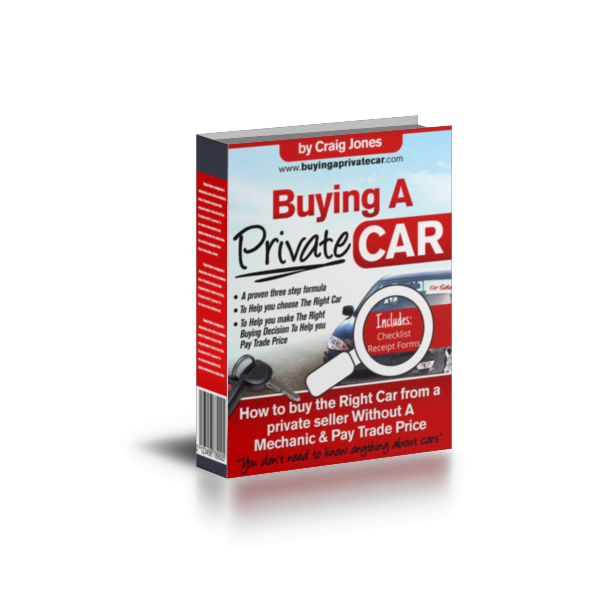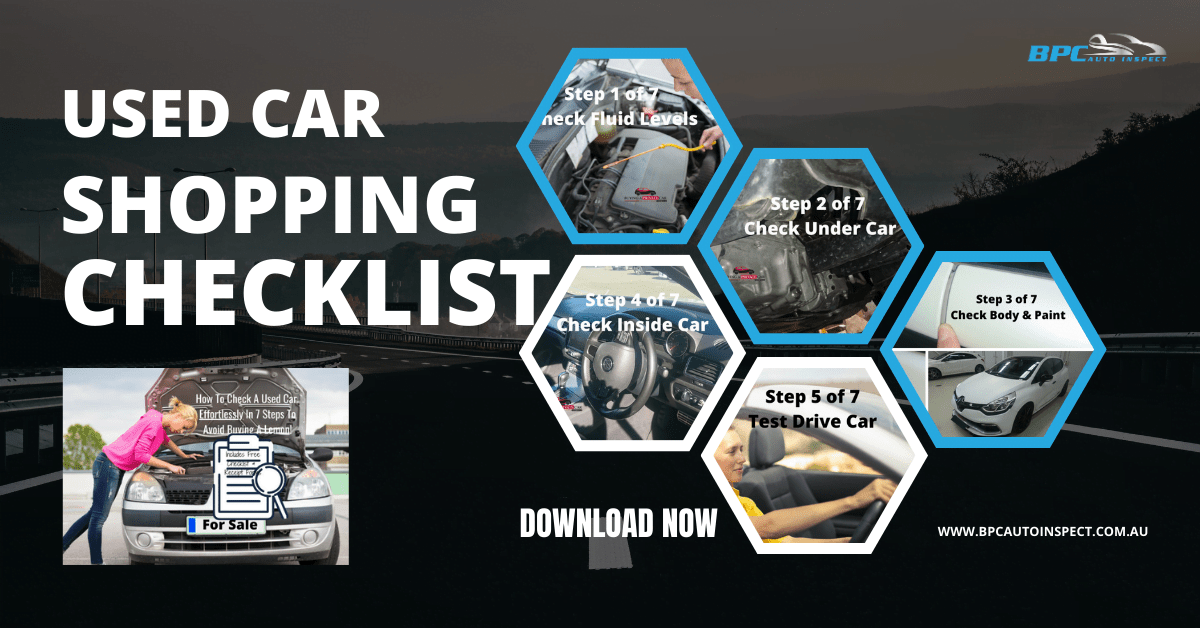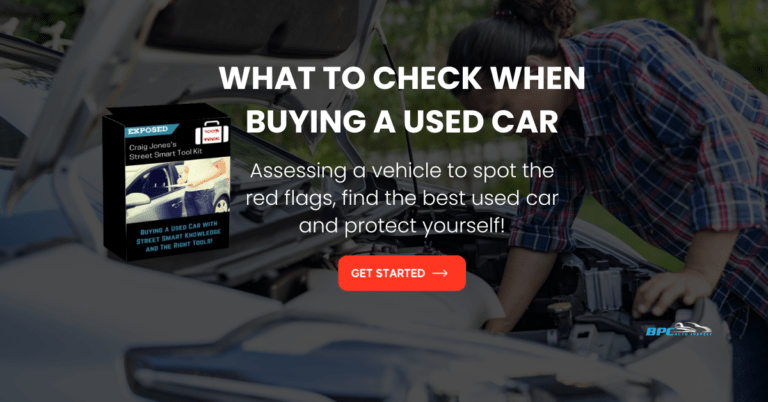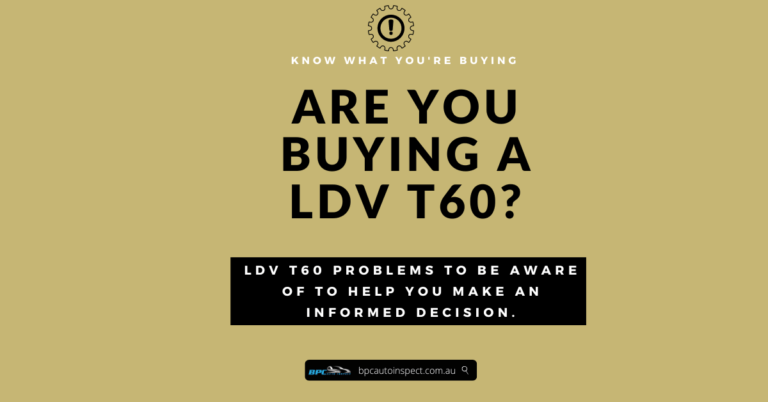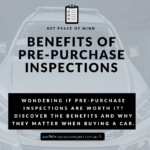A Used Car Shopping Checklist: A comprehensive guide for Australian buyers with 7 steps to follow to help you find a reliable car.
Buying a used car in Australia can be an exciting yet daunting experience, whether purchasing from a private seller, car dealer, or auction ensure you make a smart investment and avoid potential pitfalls.
Follow this comprehensive checklist. This used car buying guide will walk you through the critical steps for evaluating a used vehicle and answer common questions like how many kilometres to look for when purchasing a used car.
1. Research the Car’s History
Before you even set foot on a lot or meet with a private seller, research the car’s history using its Vehicle Identification Number (VIN). In Australia, services like the Personal Property Securities Register (PPSR) can provide valuable information about the car’s past, including:
- Whether it’s been written off or stolen.
- Whether there’s any outstanding finance on the vehicle.
- Its registration status.
A history report can help avoid buying a lemon or a car with hidden problems.
2. Inspect the Vehicle Thoroughly
Whether you’re buying from a private seller or a dealer inspecting the vehicle is a must. Ideally, take someone with automotive knowledge, or you can even use a mobile inspection service. To help you, use our Street Smart Tool Kit, which includes a Used Car Inspection Checklist, a 7-Step Guide to Spot Red Flags, and Buyer’s Deposit Receipt Templates for securing the deal.
You can do your due diligence before putting down a deposit and proceed to get a pre-purchase car inspection Brisbane service with BPC Auto Inspect.
Here are key points to check:
- Exterior: Look for rust, paint inconsistencies, dents, and misaligned panels. Check the condition of the tyres for uneven wear.
- Interior: Inspect the upholstery for wear and tear. Make sure the seatbelts, windows, locks, and lights function properly.
- Engine and Fluids: Open the bonnet and check the engine for leaks. Ensure fluid levels (oil, coolant, brake fluid) are at proper levels.
- Test Drive: Always take the car for a test drive. Pay attention to the steering, brakes, and how the car handles in different driving conditions.
If you’re unsure what to look for in each section, check out our detailed post on what to check when buying a used car.
3. Check for Red Flags
Used car purchases can sometimes come with hidden problems, especially if you’re dealing with a private seller or buying from a car auction. Our Street Smart Tool Kit can help you spot red flags, including:
- Inconsistent service history.
- Modifications or aftermarket parts that may indicate hard driving.
- Poor repairs from previous accidents.
For example, if a car has too many aftermarket modifications (like a turbocharger or altered suspension), it could mean the vehicle was driven hard and might have issues down the line.
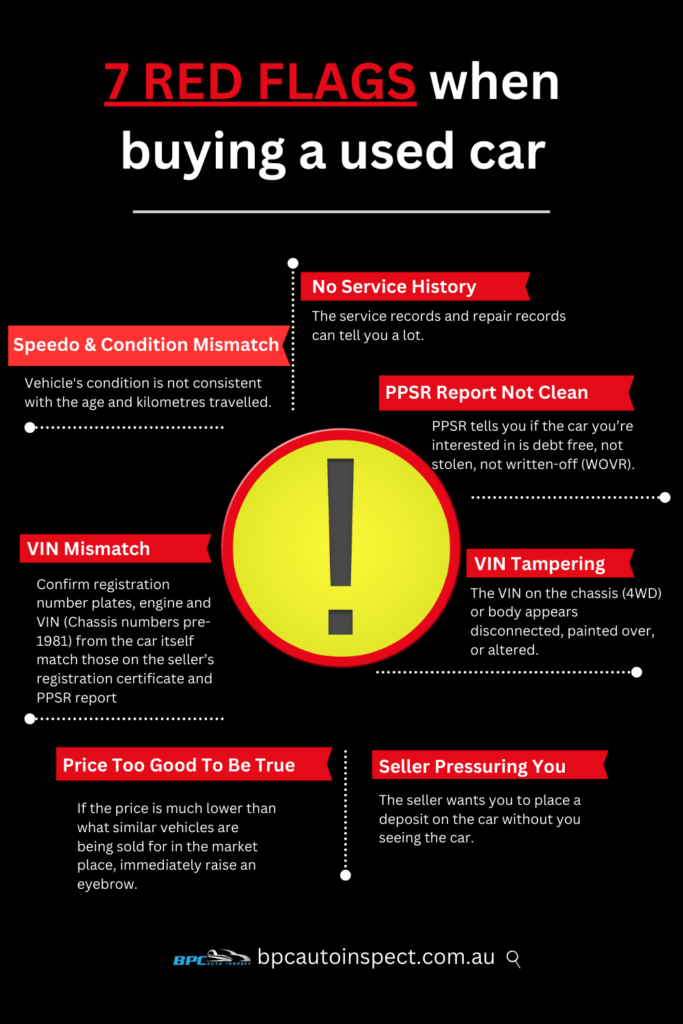
4. Understand the Legal Obligations
When buying from a dealer, Australian law requires them to provide a statutory warranty for vehicles that meet certain conditions (e.g., under 10 years old and less than 160,000 km). However, private sales don’t come with this protection, so it’s even more critical to perform due diligence. Ask for a buyer’s deposit receipt template to formalize the deal and protect yourself from any disputes later.
5. Verify the Price with the Market Value
Before negotiating, make sure you’re paying a fair price for the car. Use resources like RedBook or Carsales.com.au to check the vehicle’s current market value based on its make, model, age, and condition. Remember, the price you pay should also reflect the car’s mileage, condition, and whether it comes with a full service history.
6. Watch for Additional Costs
In Australia, transferring ownership involves additional costs, such as stamp duty and registration transfer fees. Factor these into your overall budget, especially if you’re buying from a private seller, where you’ll likely have to manage the paperwork yourself. Also, consider the cost of comprehensive insurance, which may vary based on the car’s age and value.
7. Auctions: Proceed with Caution
Buying a used car from an auction can be a great way to find a deal, but it also comes with risks. Auctions generally sell cars ‘as-is,’ which means you won’t have the benefit of a warranty. Be prepared to conduct a quick inspection before bidding and avoid impulse purchases. Auctions can be a minefield for buyers who aren’t prepared, so always stick to your budget.
How Many Kms Should You Look for When Buying a Used Car?
One of the most common questions people ask when buying a used car is, “How many kilometres should it have?” While there’s no one-size-fits-all answer, a general rule of thumb is to look for cars with less than 150,000 km, as higher mileage can indicate more wear and tear.
However, certain cars can run smoothly even with higher mileage, provided they’ve been well-maintained. For instance, a Honda Civic with the R18 Z engine is known for its reliability and can last well beyond 200,000 km if serviced regularly.
Similar options include:
- Toyota Corolla – Another reliable car that can endure higher mileage.
- Mazda 3 – Known for longevity with proper maintenance.
The cars mentioned all have timing chains which is better than timing belts, which need periodic replacement. The timing chain or belt connects the bottom of the engine to the top of the engine. Vehicles with timing belts are usually placed on the market when the timing belt is due because of the high cost to replace. This is due to the labour cost.
When considering cars with higher mileage, always review the service records to ensure that it has had regular oil changes, timing belt replacements (if applicable), and other essential maintenance. Also, when buying older vehicles, there are many benefits to getting a pre-purchase inspection.
Conclusion
Buying a used car in Australia requires careful consideration and thorough preparation. Whether you’re purchasing from a private seller, car dealer, or car auction, using a detailed checklist can help you make an informed decision and avoid costly mistakes. Remember to leverage our Street Smart Tool Kit and check our other posts for more in-depth information, including what to check when buying a used car. By following these steps, you’ll be better equipped to navigate the used car market with confidence.
By carefully evaluating each step and knowing what to look for, you’ll be in a strong position to negotiate and make an educated decision. If you’re ready to start shopping, don’t forget to download our Street Smart Tool Kit to help you along the way. Safe driving and happy car hunting!
Used Car Shopping Checklist Further Help:
Unlike buying from a used car dealer, you enjoy the following benefits, a guaranteed clear title, cooling-off period, statutory warranty, and mechanical inspection. However, when purchasing from a private sale, you don’t get these guarantees, warranties and used car checks before buying.
Are you asking yourself any of these car-buying questions…
